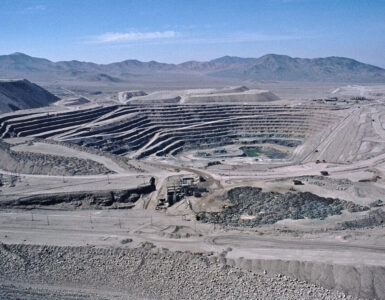Last month, Arizona senators Martha McSally (R) and Kyrsten Sinema (D) joined forces in a show of bipartisanship by introducing legislation aimed at improving water supply infrastructure, giving local operators of federally-owned facilities the resources and means they need to improve aging water treatment.
The Water Supply Infrastructure Rehabilitation and Utilization Act hones in on giving aid to the Bureau of Reclamation’s (BOR) facilities that are in need of major upgrades or replacement. The total number of treatment facilities that fall under that category comes in at 80 percent. As those facilities, most of which are more than 50 years old, continue to age, the issue of treating water thoroughly and in a timely manner only increases.
“The program is an important step in ensuring Arizona communities get the most out of their water infrastructure. It allows reservoir operators to store water in flood control space during certain times of the year. The program provides operational flexibility in a safe and effective way,” Sen. Sinema said. “Arizona communities depend on water infrastructure that is nearly 100 years old. This infrastructure requires maintenance to ensure it will continue to function properly and support our state’s economy. It is critical we ensure our aging infrastructure can provide water to Arizonans for the next 100 years.”
The bill would set aside hundreds of millions of dollars to support water recycling, desalination plants, water storage projects and addresses the southwest region’s potentially dryer future.
“We need to make sure each community has its needs met and we’re investing in water infrastructure and conserving. This needs to meet the unique needs of each community,” Sen. McSally said. “We live in a desert and we’re reliant on many sources of water in Arizona…There’s also other water that comes from groundwater and aquifer. It’s not one-size-fits-all.”
This spring, McSally helped craft the Colorado River drought plan, which was passed in April and approved by President Trump. The seven-state agreement was designed to reduce the use of water from the river by drought-stricken states in the western part of the country. Co-sponsored by House Natural Resources Committee Chairman Raul Grijalva (D) of Arizona, the bill provides approval to a deal that is designed to manage a limited water supply in the west.
Water continues to be on the minds of Arizona lawmakers heading into Congressional recess. Congress recently heard arguments on the Nogales Wastewater Fairness Act, a bipartisan-led effort that Sinema and McSally were in on as well as Representatives Raul Grijalva (D) and Ann Kirkpatrick (D). The legislation would redirect $4 million of the International Boundary and Water Commission’s budget to the maintenance and operation of the International Outfall Interceptor, which shuttles wastewater from Nogales, Sonora, through Nogales, Arizona to a treatment plant in Rio Rico.
If the Water Act, which is under review by the Senate Energy and Natural Resources Committee, is enacted, it would also ensure funding for key dam safety projects by bolstering the Safety of Dams program by $550 million and would create the Flood Control Manual and Reservoir Operations Pilot Program, a program aimed at providing more water storage flexibility to the BOR reservoir operators.
“This isn’t just unique to Arizona. There’s water infrastructure that would qualify to other states and it’s impactful to other states across the western United States,” McSally said. “There would be capital investments spread out over many years. We need to make sure the dams we have are safe structurally and improvements are made.”
















Add comment